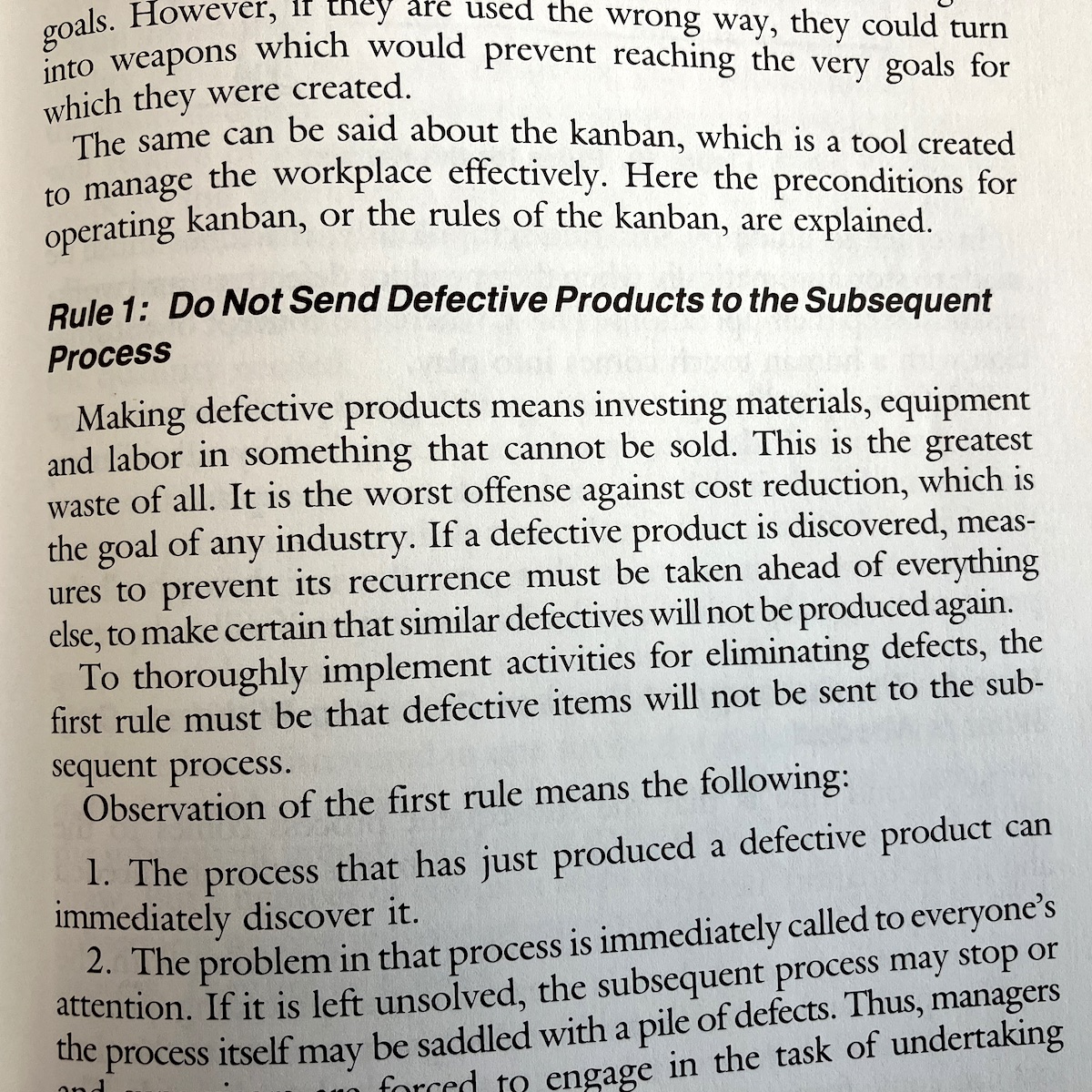The first prerequisite of a kanban tool is expressed very explicitly in the book Kanban / Just-In-Time At Toyota.
Do not send defective products to the subsequent process
Making defective products means investing materials, equipment and labor in something that cannot be sold. This is the greatest waste of all.

To illustrate this unappreciated aspect of kanban management, nothing beats a little anecdote. About ten years ago I taught a programming class to non-scientific students : they all wanted to be librarians of some sorts and with the digitalization already well underway, the university had marked out a coding course. On the third session, after an explanation of what an algorithm is, I set out to write down a simple one on the blackboard. Their following task what to translate it into actual code. After 10 minutes a girl shouts happily : « eureka, it works » and everyone else felt envious at her speed to finish this piece of work. When I got to her desk, I realized how much my teaching was off the mark : the result she was so proud of was a perfectly white screen. She had tediously and painstakingly manage to delete all the notices and warnings the compiler had thrown at her after copying word for word my pseudo-code on the blackboard. And while her program did literally nothing at all, she felt it was OK.
To be able to make the distinction, the operator (or the developer or the student in this case) needs to be able to get some help, on the spot. In a classroom, it should be easy : the teacher is at hand.
In Lean, the way to get some help is the Andon : a simple mechanism to bring the manager to the worker’s Gemba (usually a sound or a light turned on), forcing him to have a conversation and engaging him in the task of undertaking measures against recurrence.
That’s when the learning curve can kick in : when you don’t know if your work is OK or KO, it’s impossible to improve. But when you’ve learn to distinguish the two, you can start experimenting at your own pace and gradually get better at it. Until this chain of help is materialized, the worker is condemned to subpar work or to luck.

